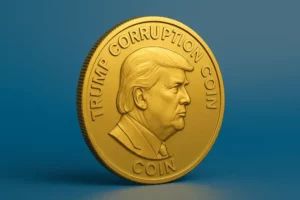
Trump’s Central Bank Theatrics Expose the Fed’s Myth of Independence
In a shocking display of power and manipulation, President Donald Trump has been publicly interfering with the Federal Reserve’s (Fed) monetary policy decisions. This bold move has significant implications for the global economy and sheds light on the long-debated myth of the Fed’s independence.
For years, central bankers have claimed that their institutions operate independently of political pressure, making decisions solely based on economic data and academic research. However, Trump’s recent actions demonstrate that this myth is just that – a myth.
The President has been open about his desire to see lower interest rates and a stronger dollar, which aligns with the Fed’s current stance. This coincidence has raised eyebrows among many economists and financial experts who argue that it’s impossible for an independent central bank to be influenced by political pressure in such a direct manner.
The Fed’s attempts to maintain its independence are rooted in history and tradition. During the Great Depression, the Federal Reserve Act of 1935 was passed with the explicit purpose of shielding the central bank from political interference. This legislation was aimed at preventing politicians from using monetary policy for their own gain or as a means of paying off special interest groups.
However, it’s clear that this independence has become increasingly irrelevant in today’s political climate. Trump’s public remarks have not only affected stock markets and currency valuations but also had a tangible impact on the Fed’s decision-making process. The timing of the President’s comments closely preceded the announcement of an interest rate cut, which is unprecedented for such a significant move.
This development highlights the stark reality that central banks are, in fact, heavily influenced by political pressure. While they may continue to insist on their independence, it’s impossible to deny the role politicians play in shaping economic policy.
In the United States, the Fed has traditionally maintained its autonomy through a combination of factors, including:
1. A dual mandate: The Fed is tasked with achieving both maximum employment and price stability (inflation control). This dual mandate allows for some degree of flexibility when making monetary policy decisions.
2. Central bank governance structure: The Federal Open Market Committee (FOMC) is responsible for setting interest rates and implementing monetary policy. The committee consists of 12 members, including seven Fed governors, four regional Fed bank presidents, and the Vice Chairman.
Despite these safeguards, it’s clear that Trump’s actions have effectively compromised the Fed’s independence. This has significant implications for the global economy and could set a dangerous precedent for future administrations.
In conclusion, Trump’s central bank theatrics expose the myth of the Fed’s independence. It’s essential to recognize the blurred lines between politics and monetary policy decision-making. The long-term consequences of such interference are far-reaching and threaten the stability of global financial markets.
As the world navigates this new reality, it’s crucial that policymakers prioritize transparency and accountability in their actions.
Source: news.bitcoin.com


